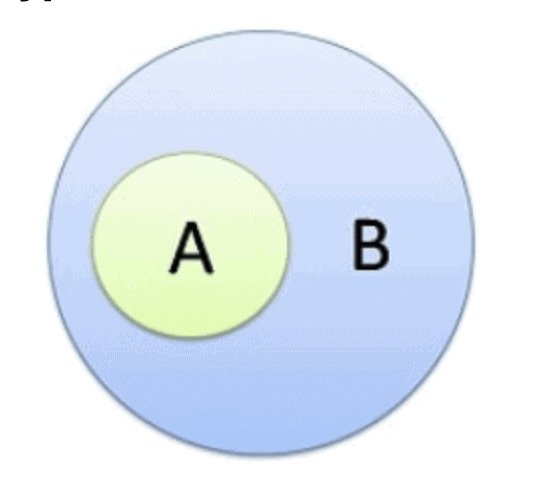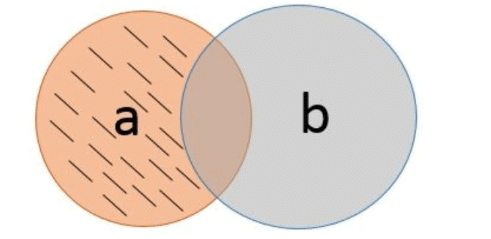Syllogism | Logical Reasoning for CLAT PDF Download
| Table of contents |

|
| What is Syllogism? |

|
| Statements of syllogisms |

|
| Steps to solve syllogism questions: |

|
| Identify the type A, E, I, O: |

|
| Understanding Syllogism with the help of Venn Diagram: |

|
What is Syllogism?
The word syllogism is derived from the Greek word “syllogismos” which means “conclusion, inference”. Syllogisms are a logical argument of statements using deductive reasoning to arrive at a conclusion. The major contribution to the filed of syllogisms is attributed to Aristotle.
Statements of syllogisms
The questions of syllogisms of three main parts.
- Major premise
- Minor premise
- Conclusion
The central premise is a statement in general, believed to be true by the author.Question for SyllogismTry yourself: Observe the following statements and select if the conclusion isCorrect/ Incorrect
Example 1:
Major premise: All Actors are right-handed.
Minor premise: All right-handed are Artists.
The conclusion is: Some Artists are Actors.
View Solution
Example: All women are smart.
The minor premise is a specific example of the major premise.
Example: Amanda is a woman.
The conclusion is a specific statement which logically follows both major and minor statement.
Example: Amanda is smart.
Steps to solve syllogism questions:
1. Note the number of variables present in the given statements
Ex: Man, doctor, pilot, etc.
2. Draw a Venn diagram corresponding to each variable; several Venn diagrams is equal to the number of variables.
3. Deduce the logical level by reading the statements and draw the corresponding Venn diagram
4. Check the conclusions given by comparing it with the Venn diagram obtained
5. Select the correct conclusion.
Identify the type A, E, I, O:
A ➜ Affirmative Positive
E ➜ Affirmative Negative
I ➜ Particular Positive
O ➜ Particular Negative

Understanding Syllogism with the help of Venn Diagram:
Different Types of Arguments
1. Affirmative Positive - A type

Example: All ‘A’ are ‘B’.
From this statement, it can be inferred that:
- Some ‘A’ are ‘B’.
- Some ‘B’ are ‘A’ is a definite conclusion.
Note: All ‘B’ are ‘A’ is a possibility but it may not be true in all cases
 |
Download the notes
Syllogism
|
Download as PDF |
2. Affirmative Negative - E Type

Example: No ‘A’ are ‘B’.
Conclusions which can be drawn from the given statement are:
- Some ‘A’ are Not ‘B’.
- No ‘B’ are ‘A’.
- Some ‘B’ are not ‘A’.
3. Particular Positive - I Type
Example: Some ‘A’ are 'B’
From the given statement, we can conclude:
- Some ‘B’ are ‘A’. (i)
- However, All ‘A’ are ‘B’. (i)
- All ‘B’ are ‘A’. (ii)
- Some ‘A’ are ‘B’. (iii)
- Some ‘A’ are not ‘B’ and Some ‘B’ are not ‘A’ is not a definite conclusion.
4. Particular Negative - O Type
Example: Some ‘A’ are not ‘B’.
It cannot be explained with a diagram. Moreover, no logical conclusion can be drawn from the given statement. There can be more than one possibilities in which this argument can be represented.
They are as under:
The shaded portion shows the A, which is not B.
Deriving Logical Conclusions When Various Types ofrguments are Given Together
1. All ‘A’ are ‘B’, All ‘B’ are ‘C’ (A & A)
This argument is represented below:
 Conclusions:
Conclusions:
- All ‘A’ are ‘C’,
- Some ‘C’ are ‘A’,
- Some ‘C’ are ‘B’,
- Some ‘A’ are ‘C’
- (All ‘C’ can be ‘A’, All ‘B’ can be ‘A’ but may not be defiantly true in all the cases.)
Conclusions:
1. All the flutes are instruments.
2. All the harmoniums are flutes.
2. All ‘A’ are ‘B’, No ‘B’ are ‘C’ (A & E)
This argument is represented below:

- No ‘A’ is ‘C’.
- Some ‘A’ are not ‘C’.
- Some ‘C’ are not ‘A’.
- All ‘A’ are ‘B’.
3. Some ‘A’ are ‘B’, All ‘B’ are ‘C’ (I & A)
This argument can be represented by Figure 9 as well as figure 10.


Conclusions which are definitely true in both the cases:
- Some ‘A’ are ‘C’.
- Some ‘C’ are ‘A’.
- Some ‘B’ are ‘A’.
Conclusion:
I. Some yatches are boats.
II. Some submarines are boats.
III. Some submarines are ships.
IV. Some yatches are ships
Note: All ‘A’ are ‘C’ , Some ‘A’ are not ‘C’ , Some ‘A’ are not ‘B’ and vice versa can be a possibility but may not be true in all the cases. The other possibility is as under.
4. Some ‘A’ are ‘B’, No ‘B’ are ‘C’ (I & E)
This argument can be represented by Figure 11, 12 & 13.
Conclusions which are definitely true in all the possible cases:
- Some ‘A’ are not ‘C’.
- Some ‘B’ are not ‘C’.
- No ‘C’ is ‘B’.
- Some ‘C’ are not ‘B’.



The shaded portion shows A which are not C.
Note: Any conclusion with ‘C’ as subject and ‘A’ as predicate is not a definite conclusion.
5. No ‘A’ are ‘B’, All ‘B’ are ‘C’ (E & A)
This argument can be represented by Figure 14, 15, & 16.
Conclusions which are definitely true in all the cases:
- Some ‘C’ are not ‘A’.
- No ‘B’ is ‘A’.
- Some ‘B’ are not ‘A’.
- Some ‘A’ are not ‘B’.



The shaded portion shows C, which are not A.
Note: Any conclusion with ‘A’ as subject and ‘C’ as predicate is not a definite conclusion.
6. No ‘A’ are ‘B’, Some ‘B’ are ‘C’ (E & I)
This argument can be represented by Figure 17, 18 & 19.



Conclusions which are definitely possible in all the cases:
- Some ‘C’ are not ‘A’.
- Some ‘A’ are not ‘B’.
- Some ‘B’ not ‘A.’
Conclusion:
I. Some keyboards are CPU
II. All CPU’s are Mouse
III. No Mouse is a keyboard
IV. Some Mouse are keyboard
Note: Any conclusion with ‘A’ as subject and ‘C’ as predicate is not a definite conclusion.
Statements:
I. All fans are cylinders.
II. Some cylinders are basins.
Conclusions:
I. Some basins are cylinders.
II. No fan is a basin.
|
34 videos|85 docs|70 tests
|
FAQs on Syllogism - Logical Reasoning for CLAT
| 1. What is Syllogism? |  |
| 2. What are the steps to solve syllogism questions? |  |
| 3. How can Venn diagrams be used to understand syllogism? |  |
| 4. What are the different types of syllogisms? |  |
| 5. How can syllogisms be useful for CLAT exam preparation? |  |




























